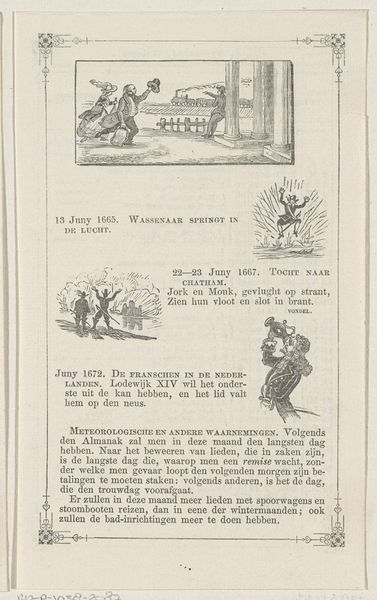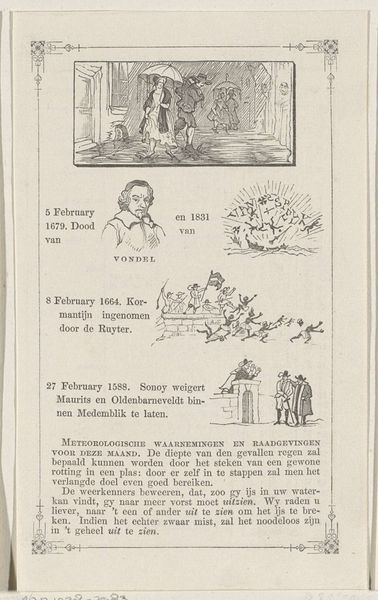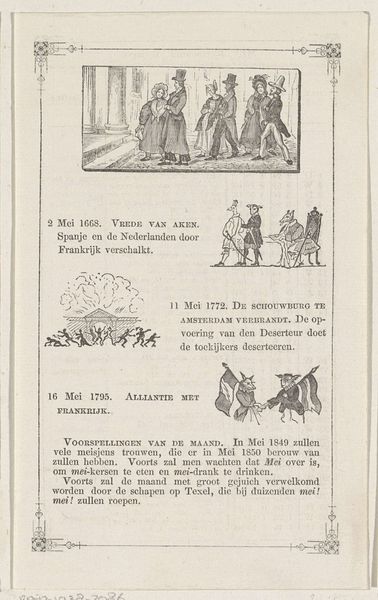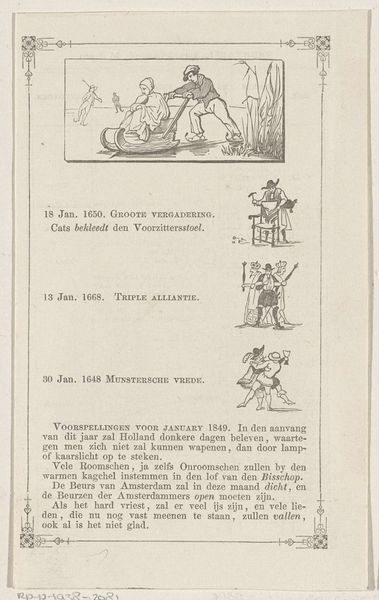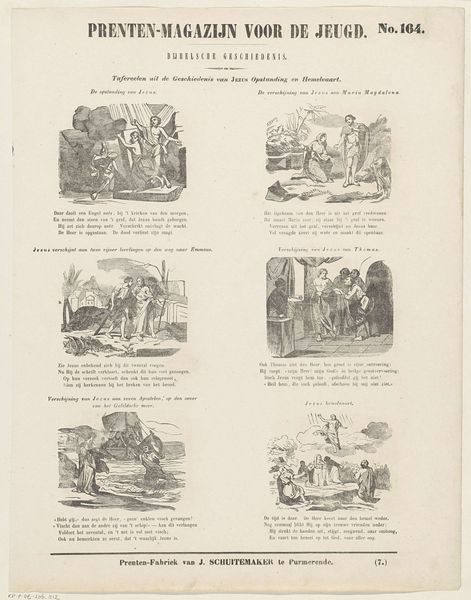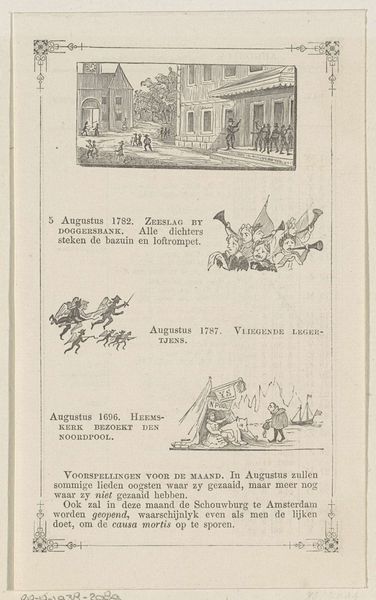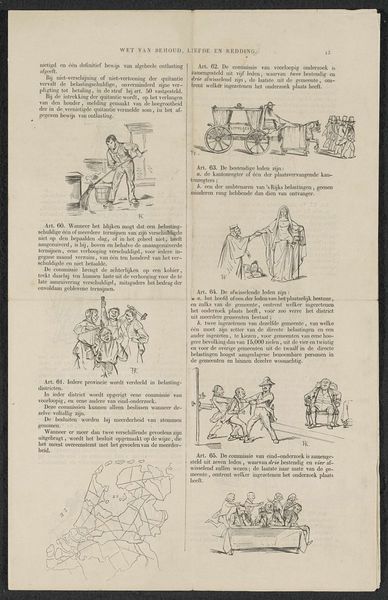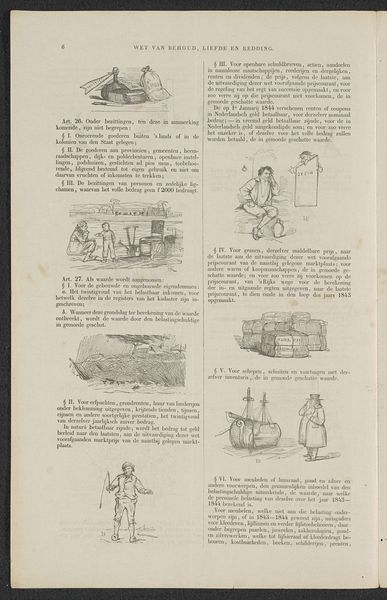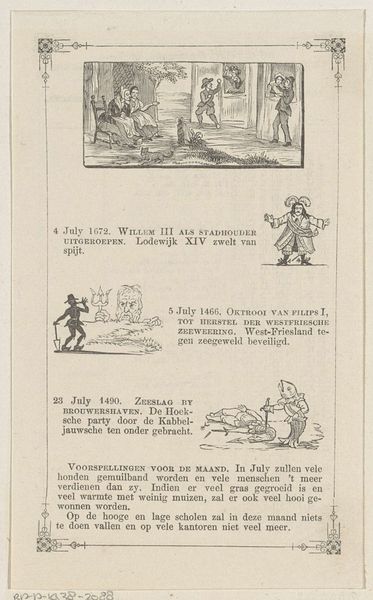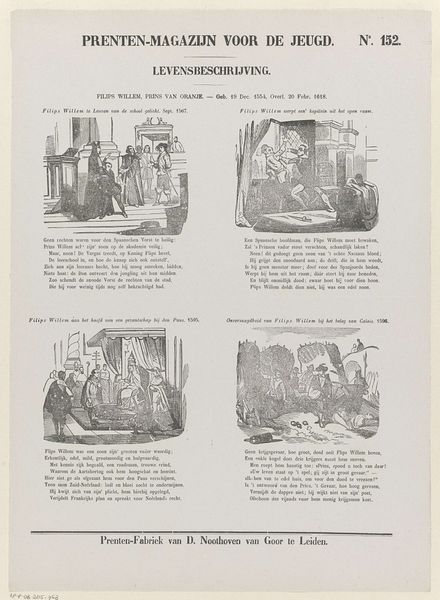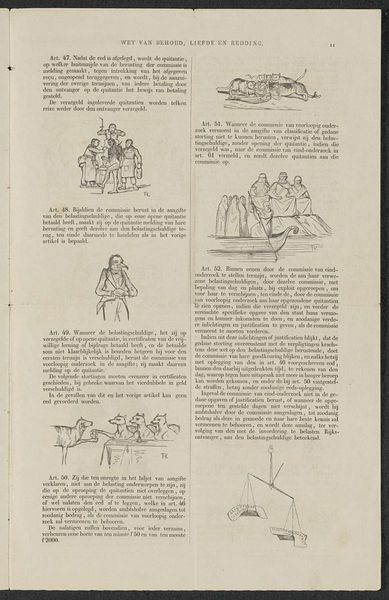
drawing, print, engraving
#
portrait
#
drawing
#
comic strip sketch
#
quirky sketch
#
narrative-art
# print
#
old engraving style
#
sketch book
#
personal sketchbook
#
idea generation sketch
#
sketchwork
#
sketchbook drawing
#
history-painting
#
storyboard and sketchbook work
#
sketchbook art
#
engraving
Dimensions: height 155 mm, width 95 mm
Copyright: Rijks Museum: Open Domain
Editor: This print, titled "Maart" by Friedrich Robert Prinz, created in 1849, shows different vignettes, almost like a page from a historical comic book. It's quite charming, yet something about the rigid style also feels a bit…stark. How do you interpret this work? Curator: It's fascinating to consider this as a form of early visual journalism, reflecting how historical events were disseminated and consumed by the public. Look at the varied scenes, each acting as a snippet of information, presented without a clear hierarchy. Editor: I see what you mean. The different images and chunks of text give the feel of a series of news stories from a single month across different years. It feels like an attempt to condense a whole month's news. Curator: Precisely. What sociopolitical elements can we unravel from its composition? For example, observe the reference to Hugo de Groot being carried away in a book chest, a pivotal moment in Dutch legal history. And what about the “predictions” written at the bottom; could that possibly signal growing literacy? Editor: Oh, interesting point! And it connects with those "newspaper articles" the print is talking about. Also the prediction, “People of all ranks will notice a marked improvement, especially when they are on the trains”, clearly indicates it’s responding to changes brought by industrialisation. It almost normalises this rapid progress. Curator: Exactly! The artwork isn't just about illustrating historical events, but also about the way in which social changes like increasing literacy and access to transport were integrated into public consciousness and perhaps served as propaganda for societal advancement. It also provides interesting insights into anxieties of the time. What have you gleaned from our dialogue? Editor: It's made me think about how popular prints served not only to document, but to actively shape perceptions of history and progress in society, framing even anxieties within specific narratives.
Comments
No comments
Be the first to comment and join the conversation on the ultimate creative platform.
